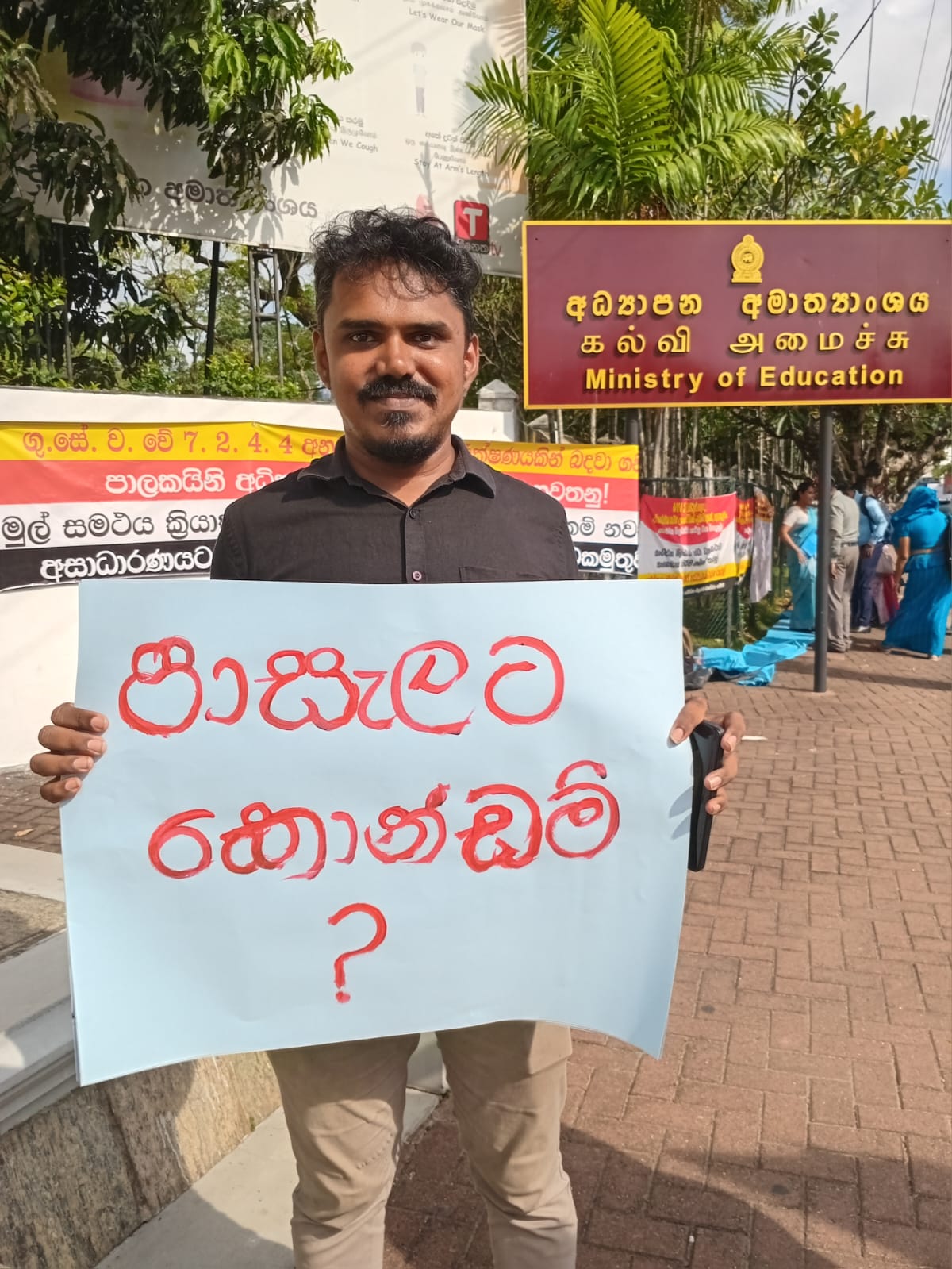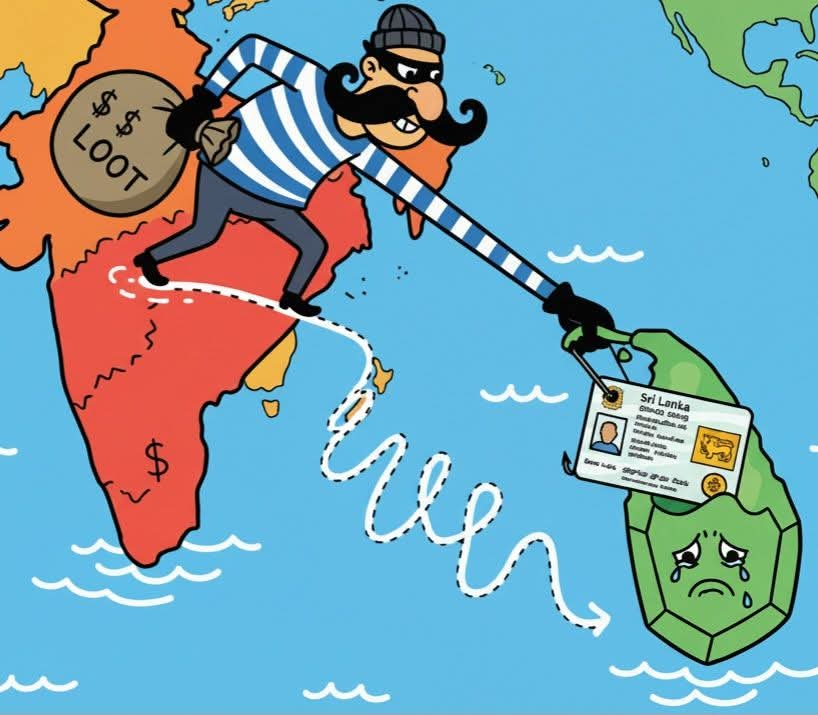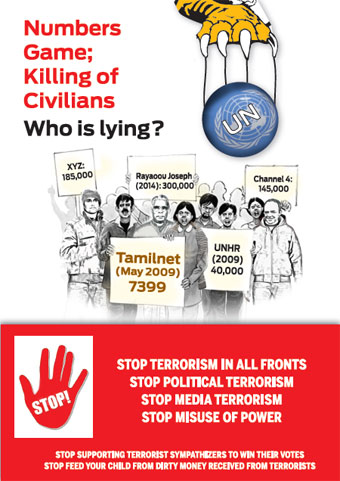Sri Lanka expects every man will do his duty
(Courtesy of The Island)

By Admiral (Retd) Ravindra C Wijegunatatne
Former Chief of Defence Staff
The flag signal that Vice Admiral Lord Horario Nelson hoisted in the main mast of his flagship HMS Victory just before engaging with the French and Spanish combined fleet during the Trafalgar sea battle on 21 October 1805 was “England expects that every man will do his duty”. Trafalgar was a decisive Naval engagement of Napoleonic Wars. I modified it to read as “Sri Lanka expects every man will do his duty” to motivate our men during sea battles.
I am going to introduce a unique person in this article who has lived up to the above signal. He is now retired and lives in Ratnapura. If someone were to be hit by enemy gunfire on the stomach with bowels falling out, gravely injured, and thrown out of his boat into the sea, how long would he survive? It is obvious that his survival chances are very remote. This gallant Special Boat Squadron (SBS) officer with severe gunshot injuries to his stomach swam for nearly two hours out at sea with other survivors while holding his guts with one hand, near the Norway Island in Trincomalee on 22June 2001. His sheer determination and the excellent training received at SBS helped him achieve this task. He was picked up by another IPC (Inshore Patrol Craft) and immediately airlifted to Colombo for medical treatment. Injuries to his stomach, especially to his small intestine and seawater contamination of inner organs made things very complicated. I visited him at the ICU and whispered a few words to his ear, “Be strong son!” He opened his eyes and shook his head. Our doctors and surgeons at the National Hospital, Colombo, did a marvelous job. His internal wounds took a long time to heal. The wounds were infected. He was on a liquid diet for months. After several surgeries and stay in hospital for eleven months, our hero came out smiling.
However, he had to be on a special diet. He could eat only a few vegetables and fruits. No oils or meat. Medication will have to continue for the rest of his life. This officer is Commander (SBS) Chatura Gamage RSP and five bars. A hero of our time.
Chatura is from the first batch of the direct entry SBS officers. In 1997, Navy decided to allow cadets directly join the Special Boat Squadron, in addition to the existing practice of current Naval officers volunteering to join the SBS. This was due to the sheer demand of well-trained naval personnel to fight the war. Applicants for SBS had to go through a more rigorous physical standard tests and swimming tests than the ordinary entry cadets. Chatura from St Aloysius College, Ratnapura was a top athlete, school cadet, and a martial arts champion. He joined the Navy as an SBS cadet into the 28th intake on 30th July 1997 along with four other SBS cadets.
All cadets undergo the basic officer training at the Naval and Maritime Academy at Trincomalee for one year and then join the SBS for advanced training. I met him when he joined SBS. Chatura and his four batch mates were “guinea pigs” for the new fighting methods we were experimenting against the enemy. These new training techniques were meant to make the SBS members highly competent in water. One such technique was the “Anti-drowning drill”. Their legs and hands were tied and thrown into the deep water to survive without getting drowned! They mastered this technique soon but swallowed lot of seawater in the process!
 It was the anti-drowning drill that saved Chatura’s life when he was severely injured at sea; he knew that he will not die by drowning. These new homegrown training methods and the bi-annual joint exercises with the US Navy SEAL commandos (Exercise Balance Style) made Chatura and his batch mates very competent SBS officers.
It was the anti-drowning drill that saved Chatura’s life when he was severely injured at sea; he knew that he will not die by drowning. These new homegrown training methods and the bi-annual joint exercises with the US Navy SEAL commandos (Exercise Balance Style) made Chatura and his batch mates very competent SBS officers.
Apart from the US training, they also received diving training, and underwent additional training with the Army Special Forces and Commandos. Other SBS officers and sailors respected them very much because they saw the suffering they had to undergo during the very difficult training. When I took over the Command of the SBS for the second time in year 2000, I found these five young officers were a great asset to the SBS. They were deployed in various clandestine operations in the North and East behind the enemy lines, especially at night. They rest during daytime, and their day starts at sunset. We do our training in complete darkness with natural light. We never use any lighting devices. This is to improve the night vision capabilities of the naked eye. We swam and canoed for very long distances in lagoons at night with our weapons and equipment in waterproof bags. We could creep into enemy beaches at night clandestinely. We could move at ease without making noises and without any light at night. We could use our 9mm MP5 SD weapons very effectively. The enemy called us the ‘Ghost Unit of the Sri Lanka Navy’.
As the commanding officer, after assessing the capabilities of each SBS team, I used to issue short written orders to them for behind-the-enemy-lines operations. Most of our operations were very successful. In some instances, we had failures too that suffered casualties. One such operations led by Chatura off K Point in Jaffna lagoon was a complete success. Chatura was very active in SBS until he got injured in 2001. He was given approval to retire full pay and pension due to injuries, but he declined and opted to remain in SBS. He followed a diploma course in computer science at the NIBM on his own. His IT knowledge was extremely useful for SBS operations. He became the live wire for the SBS Headquarters at Trincomalee and the troops deployed. He continued his martial arts training and introduced mixed martial arts to the SBS. He even travelled to China on a scholarship to develop his martial arts skills. He slowly regained his physical strength by adopting to vigorous training techniques of martial arts. The only disadvantage was the dietary restrictions. He was determined to go back to battlefield. He was happy when his beloved wife, Lanka, gave birth to his daughter during this period.
On 17th June 2006, another sad incident changed his life. His batch mate and close friend Lieutenant (SBS) Sudesh Kumara Dalugama went missing in action at sea off Pesalai, Mannar, during a sea battle with the LTTE sea tigers. Dalugama’s body was never found. Despite strong objections by his doctors, at his own risk, Chatura returned to the battlefield.
In spite of having the opportunity to be at home and draw the full pay and pension, Chathura decided to return to rejoin the fight for the country.
During the final battle against the sea tigers, Chathura played a pivotal role with the SBS arrow boat squadron, fighting out at sea at day and night under the command of then Captain D K P Dassanayake. On some days, he survived with just fruit juice, water and glucose. When he returned after sea patrols on Arrow boats, medical staff had to inject him with saline to treat his semi-dehydration condition. However, none of these challenges and difficulties could bring down his morale and enthusiasm. Their team worked tirelessly in extreme conditions to prevent the LTTE terrorist leader Vellupillai Prabhakaran from escaping via the sea. Captain DKP‘s arrow boat units deployed very close to the enemy beach, and Chatura and other SBS/RABS personnel were able to prevent the sea movements of the sea tigers during this time. This action prevented the possible escape of Prabhakaran. Chatura proved that THE IMPOSSIBLE WAS POSSIBLE.
 Nelson Mandela once said, “It always seems impossible until it’s done”. We adopted strategies and tactics we had learnt in Foreign Staff Colleges with modifications to suit the local sea battles. The Admiral of the Fleet Wasantha Karannagoda’s strategy of deploying small boats squadrons was an example of one such extremely successful strategies. He used a large number of small arrow boats against enemy small boats to outnumber them at sea. This is known as the “Lancaster theory”. Typically, when two sides with equal power meet at sea, in a battle of attrition, the superior side will win. However, British Mathematician Fredrick Lancaster proved that when a team of 50 craft meets an enemy team of 25 craft, the larger team will lose only 8 craft, while the smaller team would lose all 25 craft. Basically, the higher the number of craft on your side, the higher your chances of winning.
Nelson Mandela once said, “It always seems impossible until it’s done”. We adopted strategies and tactics we had learnt in Foreign Staff Colleges with modifications to suit the local sea battles. The Admiral of the Fleet Wasantha Karannagoda’s strategy of deploying small boats squadrons was an example of one such extremely successful strategies. He used a large number of small arrow boats against enemy small boats to outnumber them at sea. This is known as the “Lancaster theory”. Typically, when two sides with equal power meet at sea, in a battle of attrition, the superior side will win. However, British Mathematician Fredrick Lancaster proved that when a team of 50 craft meets an enemy team of 25 craft, the larger team will lose only 8 craft, while the smaller team would lose all 25 craft. Basically, the higher the number of craft on your side, the higher your chances of winning.
With the guidance and very close supervision of the Admiral of the Fleet Karannagoda, we applied the Lancaster Theory to our sea battles. The Navy produced more and more Arrow boats locally at our Naval Boat Building Yard at Welisara. Navy gained the
superiority in sea battles against the sea tigers. This advantage over enemy boats proved very effective, and Captain DKP’s small boat squadrons returned victorious.
When the war ended in May 2009, Chatura began serving on my staff as my Personal Safety Officer (PSO) when I was the Chief of Staff of the Navy, Commander of the Navy, and finally Chief of Defence Staff. He did not stop his studies during this time and earned an MSc on GIS and Remote Sensing from the University of Peradeniya in 2017. He opted for retirement on my advice after serving the Nation for 22 years.
I place Chathura on par with the World War II Battle of Midway hero, US Navy dive bomber pilot and Squadron Commander – Commander Richard Halsey Best.
Commander Best lived for 91 years. I wish Chatura also long life.
“Fortune favors the Brave “
209 Viewers








